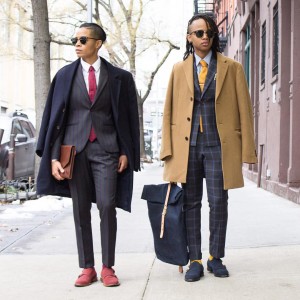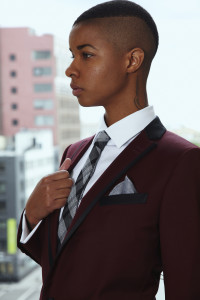Queer fashion is on the rise. It has garnered substantial media coverage, made waves at New York Fashion Week, and now it is, for the first time, the subject of a SXSW Interactive panel.
One of the panel’s speakers is Anita Dolce Vita, the owner, creative director, and editor-in-chief of DapperQ, a queer, highly-trafficked style website for trans* individuals and women who present as masculine or androgynous. She says that despite the growing attention being devoted to queer style, it is important to think of it as more than a fad. Treating the movement as a fad erases the nature of queer style as a means of identity expression for people who the mainstream does not often design for: those who live outside of the gender binary.

“People’s identities are not trends to be disposed of,” she says.
As an expert on queer style, Vita speaks from a position of authority when discussing the topic. She says that one of the panel’s goals is to educate people on the meaning of queer style. This is of particular importance for Vita given the frequent misconception that the fashion world is already queer because it is so heavily populated by gay designers.
“They’re designing clothing that is pretty much for the binary,” she says. “Queer style is a different aesthetic altogether.”
Opting out of the gender binary is an important touchstone of queer style and an act of rebellion against the tendency to overvalue masculine self-presentation. Vita says that even transgressive style falls victim to this tendency and sometimes neglects the potential for femme presentation to do work that dismantles binary thinking.

“The thread that runs through queer style is systemically rooted in gender nonconformity,” she says. “It’s a lot more inclusive than the traditional capitalist marketed styles that you see reflected in the glossies.”
The political potential of queer style to enfranchise those typically neglected by mainstream fashion is a motivating factor for Vita and her fellow panelists. Among their most important concerns is whether or not the industry is genuinely committed to the visibility and empowerment of those who practice queer style. The alternative to such a commitment is the fate that all trends meet: exploitation and eventual discarding.
“When queer style is put forth as a commodified trend it completely erases,” Vita says. “If they really care and they’re not just doing it for shock value they will continue.”
Another important aspect of the panel is discussion of the ways in which the presence of queer style on multimedia platforms makes social change. The visibility of new possibilities for people holds considerable emancipatory potential. Crucially, the benefits of emancipation extend far beyond people who identify as queer.
“Though the movement is starting within the queer community, we hope to leverage queer style as activism for everyone,” Vita says. “There are a lot of straight women who don’t want to wear a dress to their sister’s wedding!”
When and Where:
Friday, March 11
3:30 – 4:30 p.m.
Westin Austin Downtown – Continental 1-2 / 301 E. Fifth St.
Find out more: Queer Style: Visual Activism and Fashion’s Frontier
